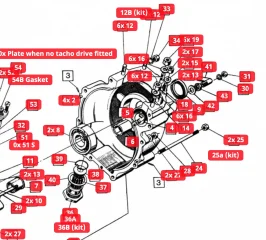- Joined
- Mar 20, 2015
- Messages
- 28
So, my 1971 Commando recently developed a rather prodigious oil leak, somewhere behind the primary. The oil did not stink of the gear oil I use in my tranny, nor had the somewhat sticky feel of the ATF I use in my primary, but was of the viscosity and sliperyness of the RedLine Motorcycle 20-50 synthetic I use in my engine. I leveled the bike, checked the tranny, fluid level OK. On a hunch I opened the drain plug on the primary and oil flowed out. I drained the excess and measured it: 200cc! I have an Alton starter (love it) but apparently the excess of oil overwhelmed its modest sealing. So, here's the question: What is the most obvious source of a relatively sudden leak of engine oil into the primary?

